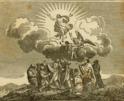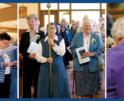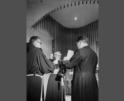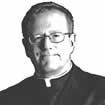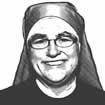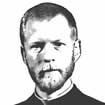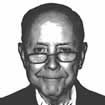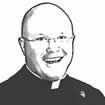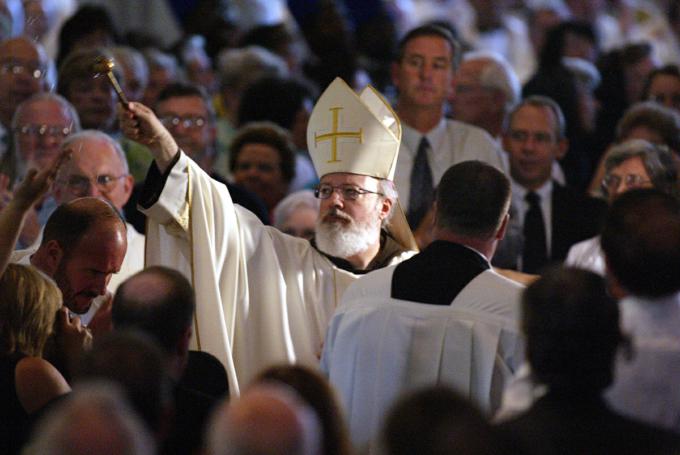
Culture

Bishop Fitzpatrick died on Feb. 11, so suddenly that there had not been enough time for Archbishop Williams' episcopal ordination.
By the time this is published, Archbishop Richard G. Henning will have been installed as the new Archbishop of Boston. It presents an opportunity to reflect on previous installations of Boston's diocesan bishops and highlight some firsts and other interesting facts.
The Diocese of Baltimore was established in 1789 and encompassed all the United States as it existed at the time. Boston was considered a mission of the diocese until 1808, when Pius VII elevated it to a diocese, along with New York, Philadelphia, Bardstown, Kentucky (later moved to Louisville); Baltimore was elevated to an archdiocese as a result.
The original decrees creating the new dioceses and appointing their respective bishops were entrusted to Father Richard Luke Concanen, named as the first Bishop of New York, but sea travel from Europe was restricted by the Napoleonic Wars and he died in Naples before ever setting sail for the United States. Official copies of the decrees finally arrived in 1810, and so Father Cheverus' episcopal ordination did not take place until Nov. 1, 1810, at St. Peter's Pro-Cathedral in Baltimore, and he was installed as Bishop of Boston upon his return to the city on Sunday, Dec. 22, 1810.
When Bishop Cheverus departed Boston in September 1823, it was uncertain whether he would return, and much time elapsed until Bishop Benedict J. Fenwick, a Jesuit priest from Maryland, was named his successor. He was installed as Bishop of Boston in Baltimore on Nov. 1, 1825, by Bishop Ambrose Marechal of Baltimore, assisted by Bishops Henry Conwell of Philadelphia and John England of Charleston. Arriving in Boston on Saturday, Dec. 3, he celebrated his first Mass at the Cathedral of the Holy Cross on Franklin Street the following day.
Bishop Fenwick's successor, Bishop John B. Fitzpatrick, holds two firsts in that he was named the first Coadjutor Bishop of Boston on Nov. 13, 1843, which meant he would immediately succeed Bishop Fenwick upon his death. He was also the diocese's first Boston-born bishop, Bishop Cheverus being a native of France and Bishop Fenwick of Maryland. Bishop Fenwick died on Aug. 11, 1846, after a long illness, and Bishop Fitzpatrick was installed as his successor at the Cathedral of the Holy Cross on Franklin Street on Aug. 16.
Bishop Fitzpatrick would be the last of Boston's bishops to be installed at the original cathedral on Franklin Street, which he would sell in 1860 to fund the construction of a new cathedral. Oft-ailing, it came as a relief when Father John J. Williams was named his coadjutor on Jan. 8, 1866, and it turned out to be just in time. Bishop Fitzpatrick died on Feb. 11, so suddenly that there had not been enough time for Archbishop Williams' episcopal ordination.
Since the old cathedral had been sold and the new one not yet built, his episcopal ordination finally took place at St. James Church, then at the corner of Albany and Harvard Streets, on March 11, 1866. Archbishop John McCloskey of New York, Bishop David Bacon of Portland, and Bishop John Conroy of Albany officiated.
Bishop Williams also became Boston's first archbishop on Feb. 12, 1875, when it was made a metropolitan archdiocese, which at the time included the Dioceses of Burlington, Hartford, Portland, Providence, and Springfield. He was consecrated archbishop in the Blessed Sacrament Chapel of the nearly finished Cathedral of the Holy Cross on May 2, 1875; he would dedicate the completed Cathedral of the Holy Cross on Dec. 8 of that year.
On April 3, 1906, Bishop William H. O'Connell of the Diocese of Portland, Maine, was installed as coadjutor to the Archbishop of Boston and therefore succeeded Archbishop Williams at the time of his death on the evening of Aug. 30, 1907. He was formally installed as Archbishop of Boston on Jan. 29, 1908, the first installation of a Boston diocesan bishop at the current Cathedral of the Holy Cross on Washington Street.
It is difficult to define Bishop Cheverus' departure as a resignation; he wished to stay in Boston but was called to his native France and rose to Cardinal Archbishop of Bordeaux shortly before his death. Bishops Fenwick, Fitzpatrick, Williams, and O'Connell all saw their tenures end with their death, the latter on April 22, 1944.
Cardinal Cushing was named Cardinal O'Connell's successor on Sept. 25 and installed on Nov. 8 of that same year, and if we discount Bishop Cheverus' departure, might be considered the first Archbishop of Boston to willingly resign while still living. Precipitated by his failing health, he resigned on Sept. 8, 1970, the same day then-Archbishop Humberto S. Medeiros was announced as his successor. The latter was installed on Oct. 7, and the former succumbed to his ill health and died on Nov. 2.
Cardinal Medeiros' untimely death on Sept. 17, 1983, meant no coadjutor had been named in advance. So then-Bishop Bernard F. Law was not named to succeed him until Jan. 11, 1984, and was installed on March 23 of that year. His resignation, accepted by Pope John Paul II on Dec. 13, 2002, brought the arrival of Cardinal Seán O'Malley, OFM Cap., who was installed July 30, 2003.
As Cardinal O'Malley's retirement approached, on Monday, Aug. 5, 2024, it was announced that his successor would be Bishop Richard G. Henning of Providence, who by this printing will have been installed as the Archbishop of Boston on Oct. 31, 2024.
MATTHEW RADULSKI IS AN ARCHIVIST FOR THE ARCHDIOCESE OF BOSTON.
Comments
Comments Policy
Recent articles in the Culture & Events section
-
Building a legacyMichael Reardon
-
Scripture Reflection for Nov. 24, 2024, Solemnity of Our Lord Jesus Christ, King of the UniverseDeacon Greg Kandra
-
Seeds of graceMolly M. Wade
-
The dedication of St. Francis Chapel in the Prudential CenterThomas Lester
-
Honeybees are taking over for canariesDeacon Timothy Donohue


